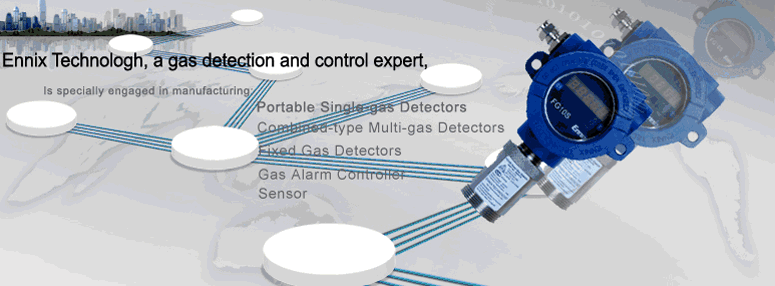|
Hazard: Flam Will explode; LEL 4.0%
Classification: Health Extremely toxic
Oxidizing agent
Synonyms: Hydro sulfuric acid, sewer gas, sour gas, rotten egg smell
Exposure limits: (OSHA) PEL\TWA: 20 ppm
(ACGIH) STEL: 5 ppm / 15 min.
(OSHA) IDLH: 300 ppm / 30 min
Industries: Oil and Gas industries (complete from drilling to refining), pulp and paper, and waste water treatment
Hydrogen sulfide is a colorless gas that is known by its characteristic rotten egg like odor. It appears naturally as a byproduct of decomposition. One of the drawbacks to trusting the senses (olfactory) for protection against hydrogen sulfide is that prolonged exposure to the gas renders the sense of smell inoperative.
Hydrogen sulfide is a highly toxic gas. It reacts with the enzymes in the blood stream which inhibit cell respiration. in other words, high concentrations of hydrogen sulfide can shut off the lungs. Low concentration exposure to the gas can burn the respiratory tract and cause swelling around the eyes.
Effects of Various H2S Levels
Hydrogen Sulfide Level in PPM Resulting Conditions on Humans
0.13 Minimal perceptible odor
4.60 Easily detected, moderate odor
10 Beginning eye irritation.
27 Strong, unpleasant odor, but not intolerable.
100 Coughing, eye irritation, loss of sense of smell after 2 to 5 minutes.
200-300 Marked conjunctivitis (eye inflammation) and respiratory tract irritation after one hour of exposure
500-700 Loss of consciousness, cessation (stopping or pausing) of respiration, and death.
1000-2000 Unconsciousness at once, with early cessation of respiration and death in a few minutes. Death may occur evenif
individual is removed to fresh air at once.
|


